Have you ever looked at a spool of solid black thread and either thought it was the most boring thing in the world, or that it could only have limited applications? After all, how much can you really do with solid black thread? It turns out there’s a lot of things that black thread is useful for, starting with knowing how to highlight with black thread.
I both love and hate sewing with black thread, and for exactly the same reason – it’s almost impossible to see when you’re sewing on black material.
Tips for Sewing with Black Thread
When you’re sewing with black thread, and especially if you’re sewing black on black:
-
Make sure you have a really good light shining right where you’re sewing.
This is why I hate sewing black on black – it’s almost impossible to see. The great thing about sewing black on black is that it’s impossible for others to see as well.
I can see the mistakes I’m making as I’m sewing, but as soon as my project is out from under the machine, they pretty much vanish. And you can bet that others, who don’t know what to look for, will never find it. Your reputation for excellence will survive intact. J
For me, at least, the sewing machine light is not bright enough for black on black work. Of course, I suffer from bad eyesight, so the sewing machine light isn’t enough for many projects.
I definitely recommend finding a secondary light source for your sewing space and especially focused on your sewing machine foot.
You can find LED lights with bendable necks (or throats or whatever those long bendy things are) and magnetic pads that will adhere to your machine so you can put the light exactly where you need it.
I like these lights for short time use only as they tend to get in the way if you just leave them there all the time. Hence the magnetic pad.
-
Use highlighting techniques to bring visual enhancement to plain areas
Black thread can also be very dramatic when you want it to be seen.
This thread is fabulous for highlighting areas that are not visually exciting on their own, or for quilting designs onto large areas that need quilting but have no seams to follow. For example, I used black thread to quilt “veins” onto my dragon wings. The wings were much too large to leave alone, yet any traditional quilting design was going to take away from the overall design, so I quilted in the veins like they were always supposed to be there and it looks great!
-
Pop up, add depth, define dimensions, and create mystery by highlighting with black thread
Because black is such a dramatic and definitive color, it’s really useful for making certain aspects of your quilt pop out visually.
For instance, I used black around the eyes of my stained glass owl – it makes the eyes appear much deeper and mysterious.
Black also adds depth to a flat surface. If your project has trees or walls, windows, doors, or rocks, simply highlight with black thread on the same side of each figure. This will appear as shadows to the human eye and your piece will instantly gain depth and visual interest.
Using Scraps for Your Experimentation
Never, ever try something new on your project.
Instead, practice saving your scrap materials. Then you can experiment to your heart’s delight and your finished project will look like: “oh, of course, she was perfect!”
This is especially true when you’re edging something; an applique, attaching a trim, or defining an edge in a piece of landscape quilting.
Experiment a little with what width looks best for the effect you’re striving for. I like to use a satin stitch (it’s the buttonhole stitch on my machine) and then I play with how wide I want it.
Barb doesn’t like a really tight satin stitch, so she only sews hers with about half the thickness that I do, and it looks great. I like to make mine much more obvious, so no matter how wide I stitch, I always make it real tight. Play with it, on a piece of scrap material, and figure out what works best for you and your project.
Final Thoughts
My favorite black thread of all time is Aurifil #2692. It comes on an orange spool of 1300 meters, and lasts quite a long time.
Just remember that black adds a lot of depth and definition to any project, and you can make it pop or disappear – whichever you like. So experiment with it and enjoy yourself.
A combination of grosgrain ribbon, embroidery thread, and a highlighting stitch with black thread makes this owl’s eyes pop big time!
Here a combination of embroidery thread and black stitching thread serve to define and separate the feathers on the owl’s wing, as well as giving depth to the overall piece.
Sometimes highlighting with black thread is a very subtle endeavor. The reins on the camels, for example, are made with black thread in a very fine satin stitch. The result is nearly invisible, yet the camels without the reins looked ridiculous!
Highlighting can also become very dramatic. The black thread serves to define dimensions, offer pop-up value, and make the duller colors of this Christmas table topper glow.
Some enhancements are much too fine to do with fabric. This spider web heart was made using a thick stitch of black thread.
Black thread can be combined with other highlighting elements. Our Small Hearts panel uses a combination of highlighting with black thread and highlighting with a black marking pen to create the multi-dimensional, romantic woodland setting.
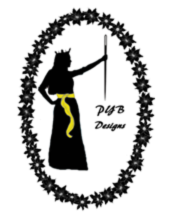
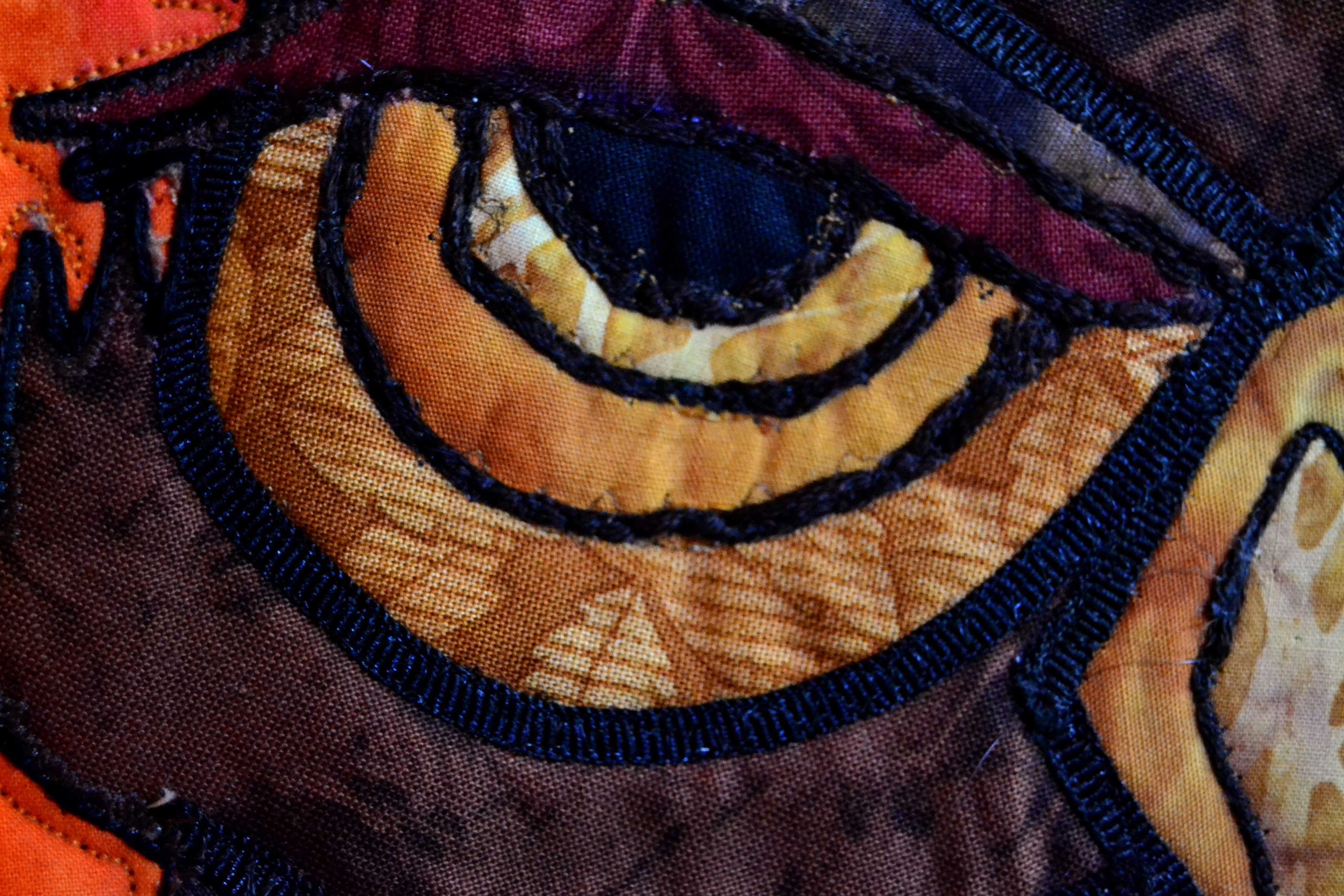
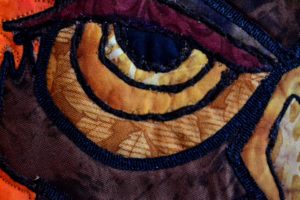
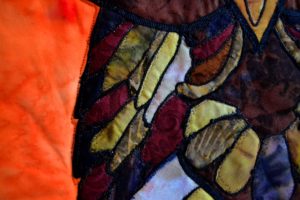
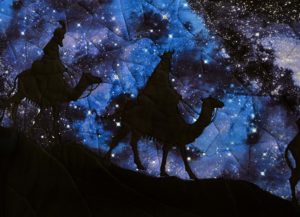
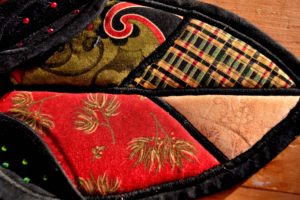
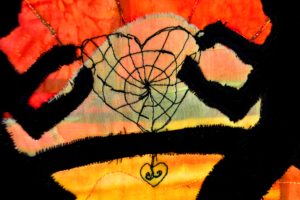
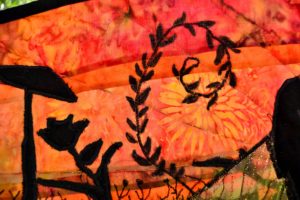
Thanks in support of sharing such a good opinion, post is nice, thats
why i have read it completely
Very nice blog post. I absolutely appreciate this site.
Thanks!
Hey this is kinda of off topic but I was wondering if blogs use WYSIWYG editors or
if you have to manually code with HTML. I’m starting a blog soon but have no coding experience so
I wanted to get guidance from someone with experience.
Any help would be enormously appreciated!
I would recommend using a theme and lots of YouTube tutorials. You can avoid most of the coding, but with practice you will recognize a few simple lines that you can put in at will.
I am extremely inspired with your writing abilities and also with the structure for your blog.
Is that this a paid topic or did you modify it your self?
Anyway keep up the excellent high quality writing, it is rare to
look a great weblog like this one nowadays..